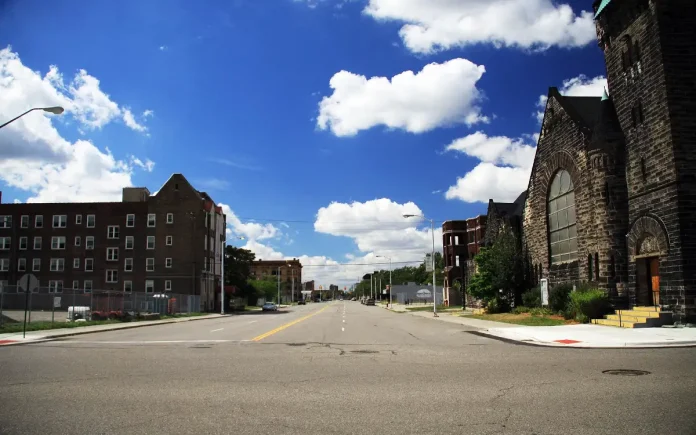New York: In an age overshadowed by the looming uncertainties of climate change, a recent study has sent seismic shockwaves through the United States, projecting a disconcerting future where thousands of cities could transform into ghost towns by the year 2100. This deep dive seeks to unravel the intricate findings of the research, revealing the profound environmental challenges, urban vulnerabilities, and the imminent specter of deserted landscapes.
The study paints a vivid picture of a profound metamorphosis awaiting the American landscape by 2100, with nearly 30,000 cities potentially on the brink of becoming ghost towns. The primary drivers of this anticipated demographic shift include diminishing birth rates and an escalating trend of urban migration, potentially impacting up to two-thirds of cities.
Researchers from the University of Illinois underscore that, with the exception of Hawaii and Washington DC, every American city is poised to feel the reverberations. Urgent calls for a paradigm shift in urban planning echo, emphasizing the necessity to move away from growth-centric strategies. The argument contends that prevailing planning paradigms are predominantly growth-oriented, while almost half of the cities in the US are grappling with depopulation.
While the study doesn’t necessarily predict the emergence of complete ghost towns, it envisions cities evolving into fractured, thinning, or sprawling communities as populations shift dynamically within and between urban centers. The adaptability of local governments and town planners to the evolving needs of residents emerges as a pivotal factor in shaping the future urban landscape.
The anticipated population decline poses unprecedented challenges, threatening potential disruptions in vital services such as electricity, clean water, internet access, and transit. Analysts, extrapolating insights from trends spanning the past two decades, caution that a low fertility rate combined with shrinking cities could exacerbate these challenges.
This study aligns seamlessly with US Census data indicating an overall population decline in the United States by 2080. The research methodology involved meticulous scrutiny of the average yearly population change for each city from 2000 to 2020, evaluating shifts in population over various intervals.
Cities in the Northeast and Midwest, characterized by lower median household incomes, emerge as having a higher risk of population decline.
The study forcefully underscores depopulation as a stark demographic reality in various regions of the United States, with the USDA estimating a 3.2% population decline in nonmetropolitan counties between 2010 and 2017. The ongoing depopulation in rural areas signifies an economic shift, potentially impacting community well-being and the prospects of a sustainable future, as young adults migrate away, ushering in demographic changes and an aging population in depopulating areas.



